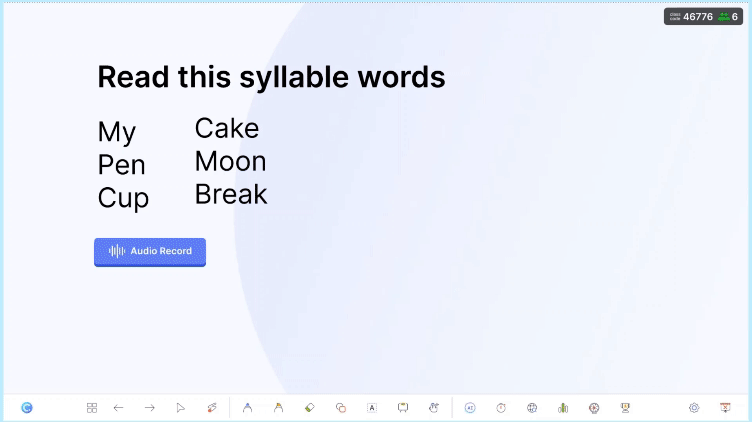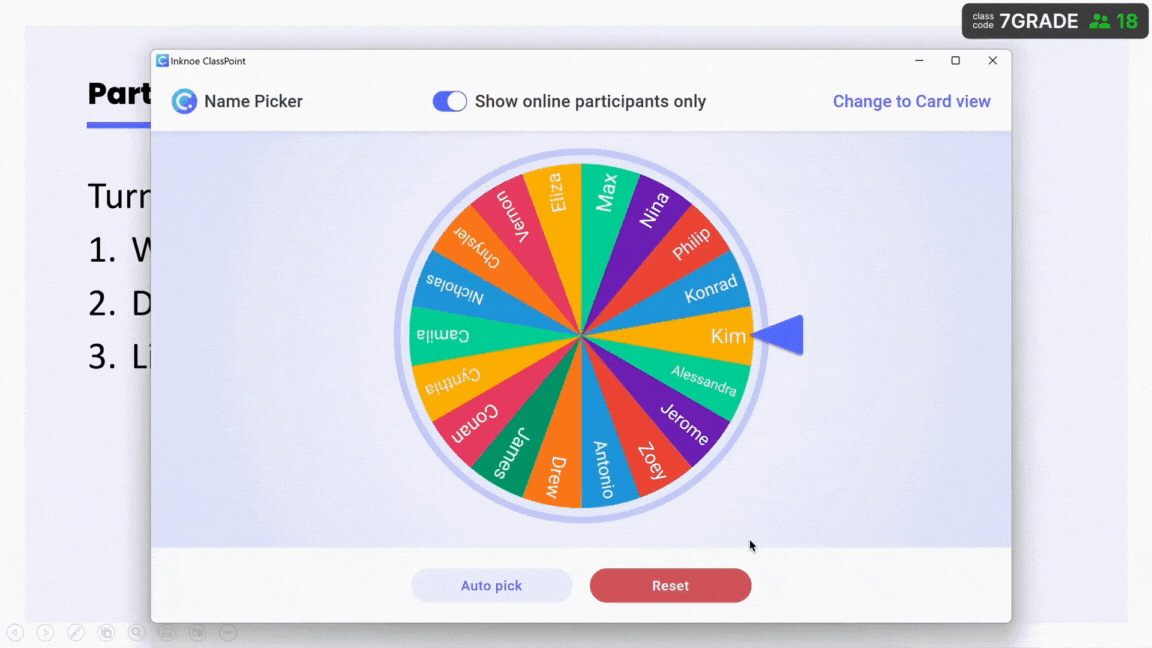True student engagement goes beyond just getting everyone to answer questions. It’s about creating a classroom where even the shyest students feel comfortable sharing their thoughts, and participation doesn’t feel forced.
Making sure students have the right spaces to participate is essential to creating an engaging classroom. Through carefully designed student engagement activities, you can provide these spaces.
These activities are designed to encourage active involvement. The goal is to create a classroom environment where participation is motivated by curiosity and interest, not obligation.
In this blog, we’ll dive into high-impact student engagement activities that promote genuine participation and give every student, including the quiet ones, a chance to shine.
Before we dive in, you might want to check out our quick guide on How to Increase Student Participation in the Classroom.
1. Non-Traditional Question Formats
Sometimes, traditional question formats like multiple-choice or short-answer often fail to fully foster student engagement. To truly spark interest, it’s essential to use question formats that go beyond the basics, encouraging deeper thinking and more active participation.
Non-traditional question formats keep students on their toes, fostering a more interactive learning environment. By mixing up how questions are posed, you create opportunities for student engagement to thrive in new ways.
Here are some engaging formats you can try:
- Scenario-Based Questions: Present a real-world problem and ask students how they would solve it using the knowledge they’ve gained.
- Visual Prompts: Use images, videos, or infographics and ask students to analyze or draw conclusions from what they see.
- Peer-Generated Questions: Have students create their own questions about the material and quiz each other.
- Ranking/Rating: Ask students to rank concepts in order of importance or rate them based on specific criteria.
Mix question formats with science-backed techniques, and you're golden. Here's a list of Effective Questioning Techniques to Increase Student Participation to get you started.
2. Gamified Challenges
Gamification turns ordinary lessons into fun, competitive events that motivate students and make learning more exciting. However, to keep it effective, gamified challenges need structure and clear expectations.
In the classroom, you can apply gamification principles to everything from quizzes to group work. The key is making the process fun but ensuring that the learning objectives aren’t lost in the excitement.
Here’s how to set healthy rules for gamified learning:
✅ Incorporate Randomness: Occasionally throw in random rewards or penalties to keep things unpredictable. Surprise points or setbacks add excitement.
✅ Balance Competition and Collaboration: While students compete for points, encourage collaboration in solving complex problems, ensuring everyone can contribute.
✅ Create Time Pressure: Introduce quick, timed challenges to add urgency, pushing students to think faster and engage more deeply.
✅ Set a Reward System: Offer rewards not only for winning but for creative solutions or teamwork, making sure all students have a chance to excel.
3. Quick Check-ins
Quick check-ins are an essential part of gauging how well students are understanding the material in real time. These short, informal interactions allow you to adjust your lesson flow and provide feedback. By using check-ins, you can ensure that no student falls behind and that the class stays on track.
Here’s a breakdown of common quick check-ins that can keep your students engaged:
| Type of Check-In | What to Prepare | When to Run |
|---|---|---|
| Polls | Create a multiple-choice question or opinion poll. | At the start of a lesson to assess prior knowledge or gather opinions. |
| Exit Ticket | Prepare a simple question for students to respond to. | At the end of a lesson to assess understanding of key concepts. |
| Thumbs Up/Down | Have students give a quick thumbs up or thumbs down based on their understanding. | During the lesson to assess engagement and comprehension. |
Check out our blog on the Best Audience Response Systems for Classrooms to help set you up with the right tools.
4. Low-Pressure Surprise Participation
Sometimes, activating student engagement doesn’t require a big setup or prep work. Low-pressure surprise participation adds an element of fun to the classroom, encouraging students to get involved without the stress of a high-stakes task.
These activities can be spontaneous, but the key is to keep them lighthearted and fun. By introducing unexpected opportunities for participation, you can spark excitement and promote a more dynamic classroom environment.
Here are some simple, low-prep ways to get students involved:
- Name-Picking: Randomly pick names to answer questions or contribute, but keep it casual and fun to take the pressure off.
- Pass-the-Question: Ask a question and have students take turns answering, one sentence at a time.
- Quick-fire Rounds: Challenge students with rapid-fire questions, encouraging them to think quickly and stay alert.
5. Call Them Upfront
Sometimes the best way to engage students is to call them upfront to contribute in a fun, non-serious way. These student engagement activities don’t have to be formative either. Keep it light and focused on creating a space where students feel comfortable sharing.
These activities can help make the classroom more interactive while allowing students to take the spotlight for short periods of time. You can pair these with opportunities for students to present, share ideas, or showcase their work.
Here are some ways to incorporate this:
- Interactive Presentations: Allow students to present a topic or project to the class in a relaxed, casual manner.
- Group Sharing: Let students collaborate on a project and present their findings as a group, fostering teamwork and communication.
- Storytelling Sessions: Have students share personal stories or reflections related to the lesson, which makes the experience more engaging and relatable.
Get students more involved by letting them take over. Here's How to Help Students Master Presentations in a Way They’ll Actually Enjoy.
Tying It All Together with ClassPoint
Incorporating student engagement strategies into your lessons can transform the classroom dynamic, but finding the right tools to seamlessly integrate these activities is key.
ClassPoint is designed to do just that. With a robust suite of interactive features, it enhances every aspect of classroom engagement whether you’re using non-traditional question formats, gamifying lessons, or conducting quick check-ins.

ClassPoint offers an easy-to-use platform that integrates directly into Microsoft PowerPoint, making these activities more interactive, right by the very slides you’re already using.
Here’s how ClassPoint amplifies these engagement activities:
- Interactive Quizzes: Set up real-time, competitive quizzes beyond the traditional formats that keep students engaged with points, instant feedback, and progress tracking throughout the lesson.
- Gamification Tools: Incorporate live scoring, leaderboards, and challenges, adding excitement and promoting healthy competition while enhancing collaboration among students.
- Live Polls: Quickly assess student understanding with real-time polls, adjust your teaching on the spot, and keep the energy up with immediate feedback.
- Student Participation Tools: Encourage surprise participation with ClassPoint’s random name picker and allow students to contribute via interactive slides, fostering a fun and inclusive environment.
- Instant Feedback: Offer timely, personalized feedback during the lesson, improving comprehension and reinforcing learning.

By seamlessly integrating ClassPoint into your everyday lessons, these student engagement activities go beyond simply filling time, as they transform your classroom into an interactive, dynamic learning environment.
All of this happens within PowerPoint, making ClassPoint the ideal tool for effortlessly enhancing student engagement in your classroom.
